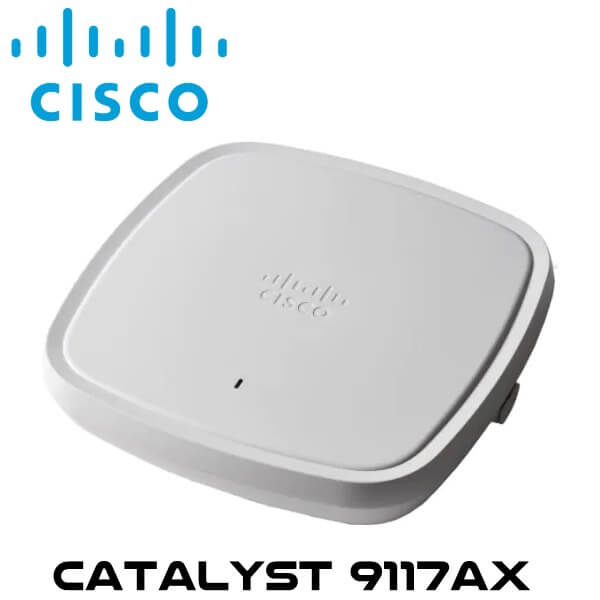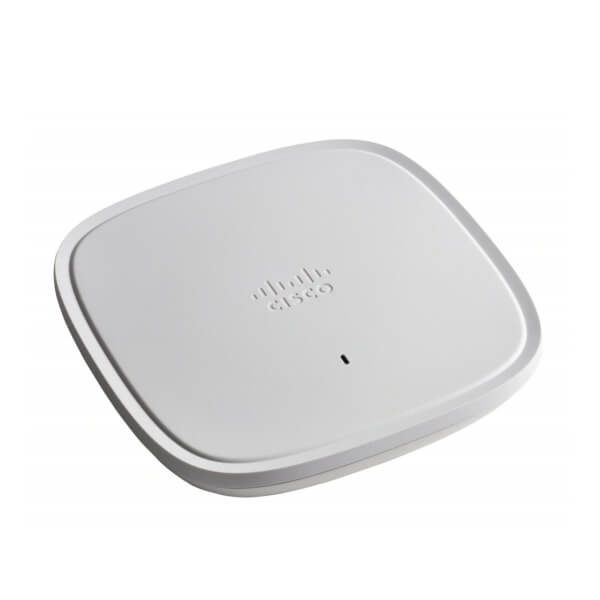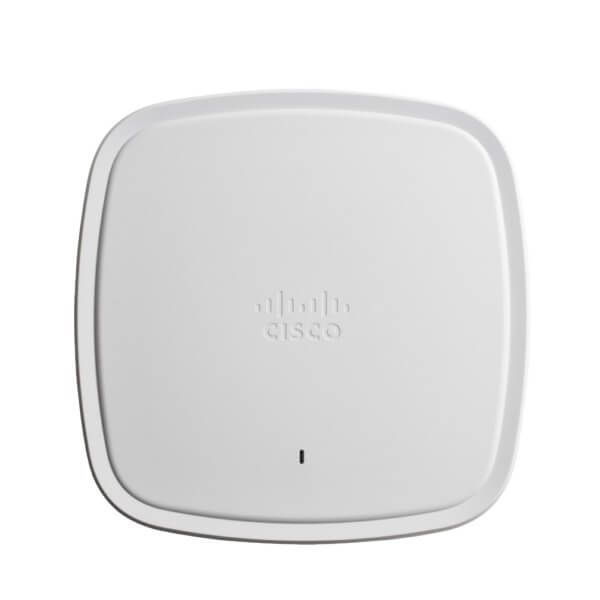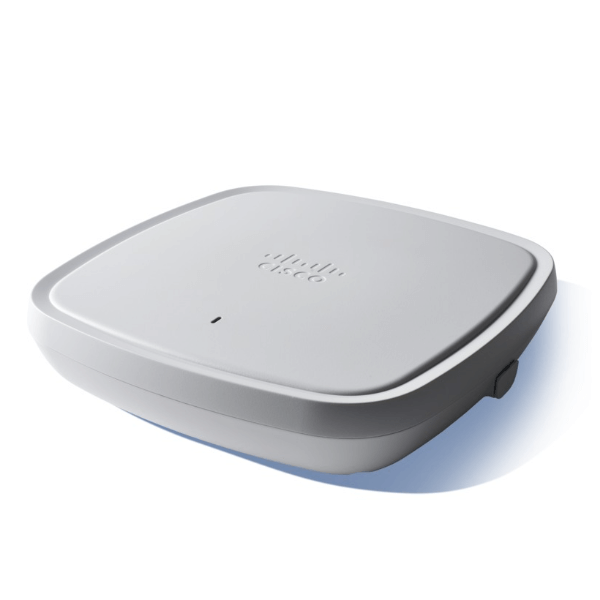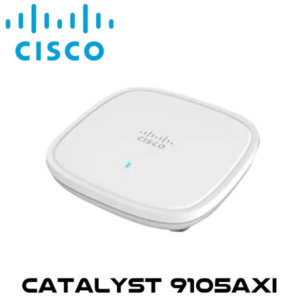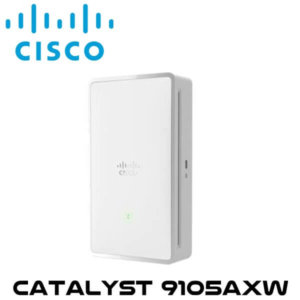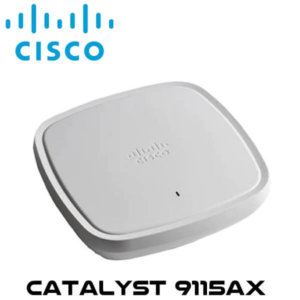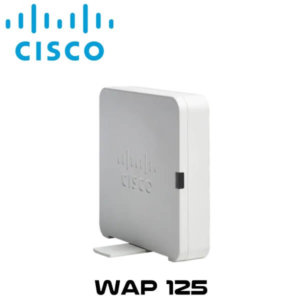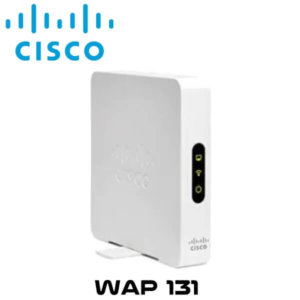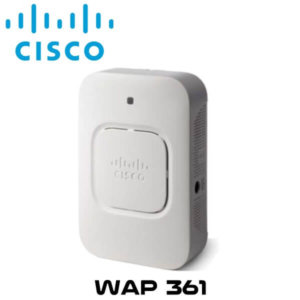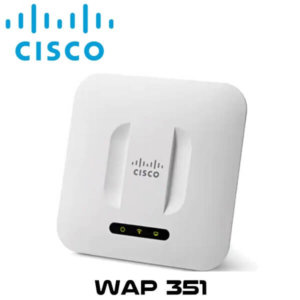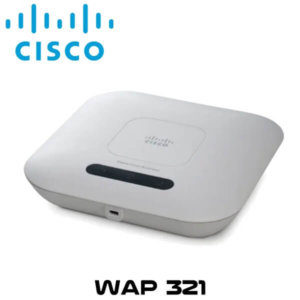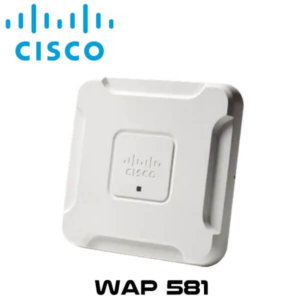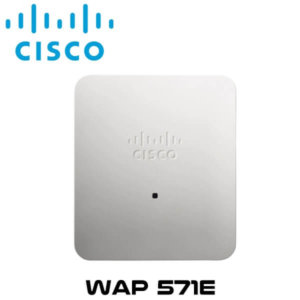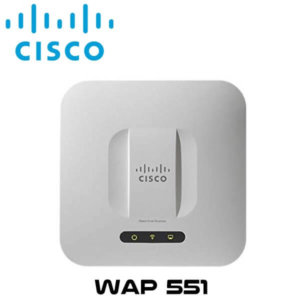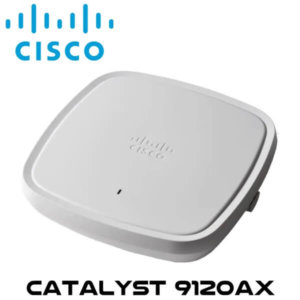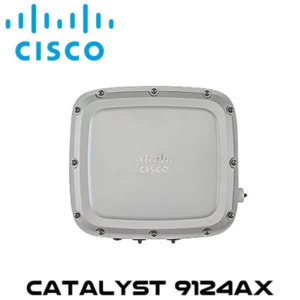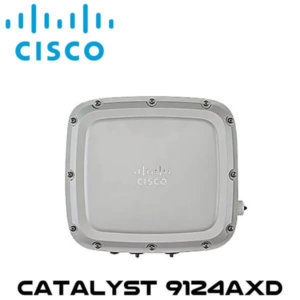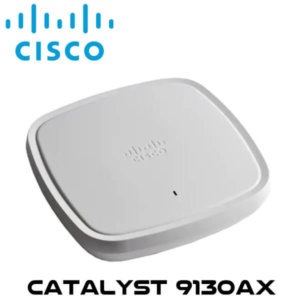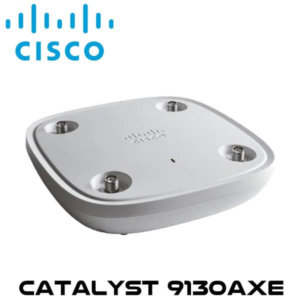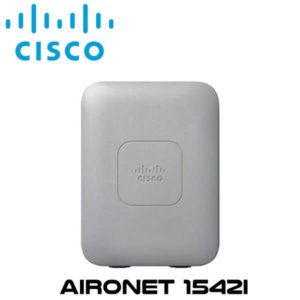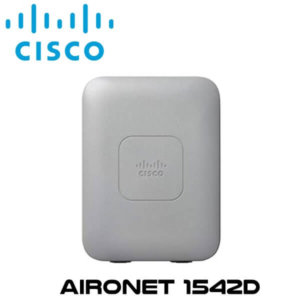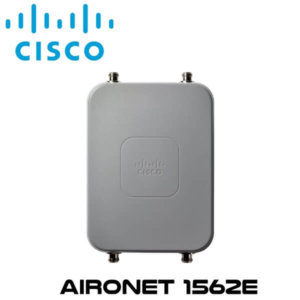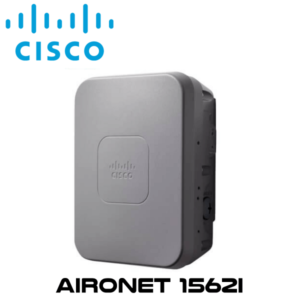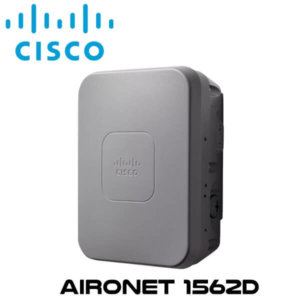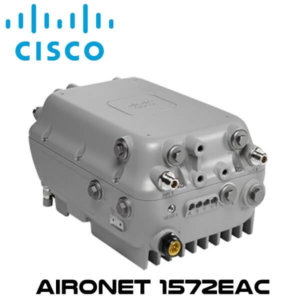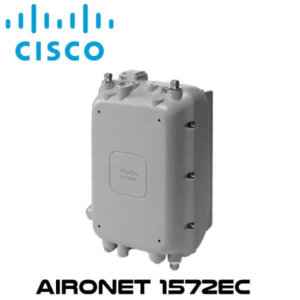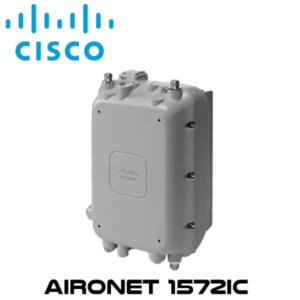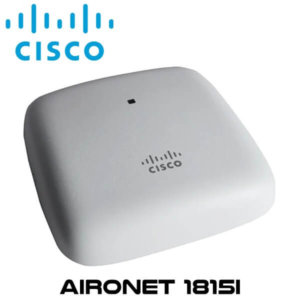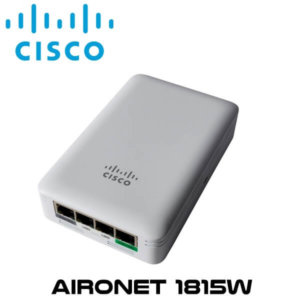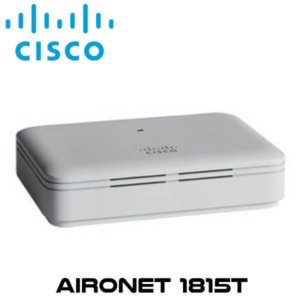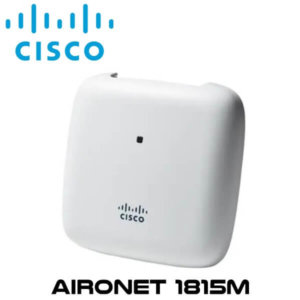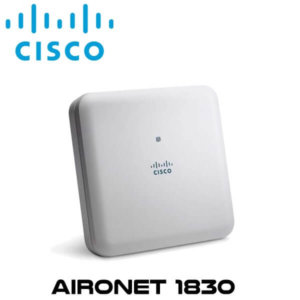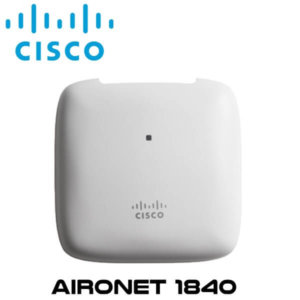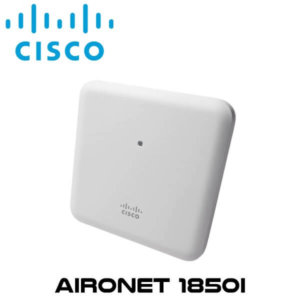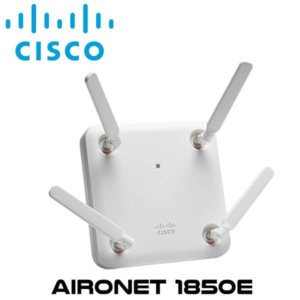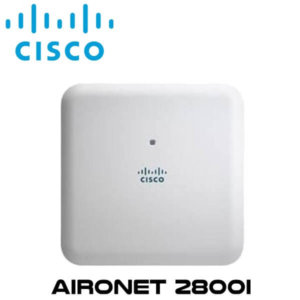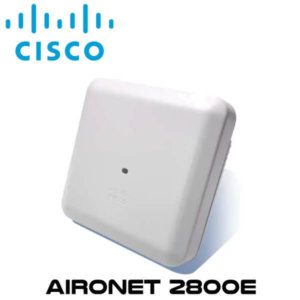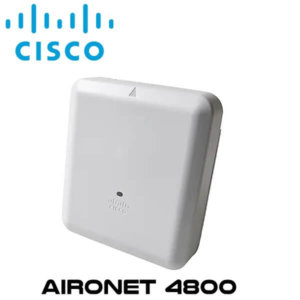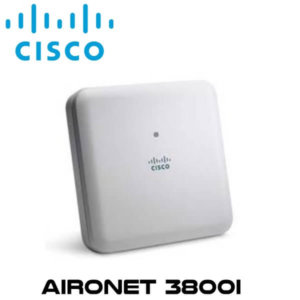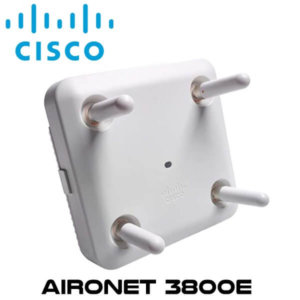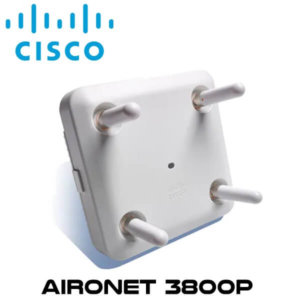Description
Cisco Catalyst9117AX Access Point Kenya
The Cisco Catalyst9117AX Kenya is a new generation of Cisco Catalyst Access Point, with high-performance Wi-Fi 6 (802.11ax) capabilities and innovations in RF performance, security, and analytics, enabling end-to-end digitization and helps accelerate the rollout of business services by delivering beyond Wi-Fi. With the Catalyst 9117 Series, you can secure remote workers or the micro-office. This Cisco WiFi Kenya can function as an OfficeExtend access point (OEAP). With an OEAP, an employee at home or in a temporary micro-office will have access to the corporate SSID and the corporate network without the need to set up a VPN or have any advanced technical know-how.
Extending Cisco’s intent-based network and perfect for networks of all sizes, the Cisco Catalyst9117AX Kenya scales to meet the growing demands of IoT while fully supporting the latest innovations and new technologies. The Catalyst 9117 Series is also a leader in performance, security, and analytics. The Cisco Catalyst9117AX Kenya Access Points, paired with the Cisco Digital Network Architecture (Cisco DNA), are enterprise-class products that will address both your current and future needs. They are the first step in updating your network to take better advantage of all of the features and benefits that Wi-Fi 6 provides.
Features
802.11ax (Wi-Fi 6)
The IEEE 802.11ax emerging standard, also known as High-Efficiency Wireless (HEW) or Wi-Fi 6, builds on 802.11ac. Cisco Catalyst9117AX Kenya will therefore, deliver a better experience in typical environments and more predictable performance for advanced applications such as 4K or 8K video, high-density, high-definition collaboration apps, all-wireless offices, and IoT. 802.11ax is designed to use both the 2.4-Ghz and 5-GHz bands, unlike the 802.11ac standard.
802.11ac Wave 2 support
Cisco WiFi Kenya provides a connection rate of up to 3.5 Gbps—significantly higher than rates offered by today’s high-end 802.11ac access points
OFDMA
OFDMA-based scheduling splits the bandwidth into smaller chunks called Resource Units (RUs), which can be allocated to individual clients only in the downlink direction to reduce overhead and latency.
MU‑MIMO technology
Cisco Catalyst9117AX Kenya supports eight spatial streams, MU-MIMO enables access points to split spatial streams between client devices, to maximize throughput.
Target wake time
A new power savings mode called Target Wake Time (TWT) allows the client to stay asleep and to wake up only at prescheduled (target) times to exchange data with the AP. This offers significant energy savings for battery-operated devices, up to 3x to 4x compared to 802.11n and 802.11ac.
Embedded Catalyst Wireless Controller
The Cisco Catalyst9117AX Wi-Fi 6 access points comes with a built-in controller. The Cisco Embedded Wireless Controller on Catalyst 9100 Access Points provides an easy-to-deploy and manage option that does not require a physical appliance. The control resides on the access point, so there is no added footprint or complexity. And, because it uses Cisco Catalyst 9800 Series Wireless Controller code, it’s easy to migrate your network as your needs grow.
User Defined Network
A feature available in Cisco DNA Center, allows IT to give end users control of their very own wireless network partition on a shared network. End users can then remotely and securely deploy their devices on this network. Perfect for university dormitories or extended hospital stays, Cisco User Defined Network grants both device security and control, allowing each user to choose who can connect to their network.
Application Hosting on Catalyst 9100 Access
Application Hosting on Cisco Catalyst9117AX Kenya Points helps future-proof and simplify IoT deployments by eliminating the need to install and manage overlay networks. Utilizing the USB interface, containerized applications and hardware modules can be deployed to reduce cost and complexity. Adding Cisco DNA Center provides workflows and deployment-wide application lifecycle management.
Multigigabit Ethernet support
The Cisco Catalyst9117AX provides uplink speeds of 5 Gbps, in addition to 100 Mbps and 1 Gbps. All speeds are supported on Category 5e cabling for an industry first, as well as 10GBASE-T (IEEE 802.3bz) cabling.
Bluetooth 5.0
The Cisco WiFi Kenya is integrated Bluetooth Low Energy (BLE) 5.0 radio to enable IoT use cases such as location tracking and wayfinding
Apple features
Apple and Cisco have partnered to create an optimal mobile experience for iOS devices on corporate networks based on Cisco technologies. Using new features in iOS 10, in combination with the latest software and hardware from Cisco, businesses can now more effectively use their network infrastructure to deliver an enhanced user experience across all business applications.
Specifications
| Software |
|
| Supported wireless LAN controllers |
|
| 802.11n version 2.0 (and related) capabilities |
|
| 802.11ac |
|
| 802.11ax |
|
| Integrated antenna |
|
| Interfaces |
|
| Indicators | Status LED indicates boot loader status, association status, operating status, boot loader warnings, and boot loader errors |
| Dimensions (W x L x H) |
|
| Weight | 3.02 lb (1.4 kg) |
| Input power requirements |
Note: When 802.3af PoE is the source of power, both 2.4-GHz and 5-GHz radios will be reduced to 2×2 and Ethernet downgraded to 1 Gigabit Ethernet. In addition, the USB port will be off. |
| Environmental |
Note: When the ambient operating temperature exceeds 40°C, the access point will shift from 4×4 to 2×2 on both the 2.4-GHz and 5-GHz radios, uplink Ethernet will downgrade to 1 Gigabit Ethernet, and the USB interface will be disabled. |
| System memory |
|
| Warranty | Limited lifetime hardware warranty |
| Item | Specification | ||||||
| Power draw | 802.3bt Cisco UPoE Full Feature | ||||||
| Power source | Power type | 2.4-GHz radio | 5-GHz radio | Link speed | USB | LLDP | |
| 802.3bt Cisco UPoE | PoE | 4×4 | 8×8 | 5 Gbps | Y | 28.9W | |
| 802.3at Full Feature* | |||||||
| Power source | Power type | 2.4-GHz radio | 5-GHz radio | Link speed | USB | LLDP | |
| 802.3at | PoE | 4×4 | 8×8 | 5 Gbps | N | 25.4W | |
| 802.3af reduced feature | |||||||
| Power source | Power type | 2.4-GHz radio | 5-GHz radio | Link speed | USB | LLDP | |
| 802.3af | PoE | 2×2 | 2×2 | 2.5 Gbps | N | 13.5W | |
| Item | Specification | |
| Available transmit power settings | 2.4 GHz
23 dBm (200 mW) 20 dBm (100 mW) 17 dBm (50 mW) 14 dBm (25 mW) 11 dBm (12.5 mW) 8 dBm (6.25 mW) 5 dBm (3.13 mW) 2 dBm (1.56 mW) -1dBm (0.79mW) -4dBm (0.39mW) -6 dBm (0.25 mW) |
5 GHz
26 dBm (400 mW) 23 dBm (200 mW) 20 dBm (100 mW) 17 dBm (50 mW) 14 dBm (25 mW) 11 dBm (12.5 mW) 8 dBm (6.25 mW) 5 dBm (3.13 mW) 2 dBm (1.56 mW) -1dBm (0.79mW) -4dBm (0.39mW) |
| Frequency band and 20-MHz operating channels | A (A regulatory domain):
2.412 to 2.462 GHz; 11 channels 5.180 to 5.320 GHz; 8 channels 5.500 to 5.700 GHz; 8 channels (excludes 5.600 to 5.640 GHz) 5.745 to 5.825 GHz; 5 channels B (B regulatory domain): 2.412 to 2.462 GHz; 11 channels 5.180 to 5.320 GHz; 8 channels 5.500 to 5.700 GHz; 11 channels 5.745 to 5.865 GHz; 7 channels C (C regulatory domain): 2.412 to 2.472 GHz; 13 channels 5.745 to 5.825 GHz; 5 channels D (D regulatory domain): 2.412 to 2.462 GHz; 11 channels 5.180 to 5.320 GHz; 8 channels 5.745 to 5.825 GHz; 5 channels E (E regulatory domain): 2.412 to 2.472 GHz; 13 channels 5.180 to 5.320 GHz; 8 channels 5.500 to 5.700 GHz; 8 channels (excludes 5.600 to 5.640 GHz) F (F regulatory domain): 2.412 to 2.472 GHz; 13 channels 5.745 to 5.805 GHz; 4 channels G (G regulatory domain): 2.412 to 2.472 GHz; 13 channels 5.745 to 5.865 GHz; 7 channels H (H regulatory domain): 2.412 to 2.472 GHz; 13 channels 5.180 to 5.320 GHz; 8 channels 5.745 to 5.825 GHz; 5 channels |
I (I regulatory domain):
2.412 to 2.472 GHz; 13 channels 5.180 to 5.320 GHz; 8 channels K (K regulatory domain): 2.412 to 2.472 GHz; 13 channels 5.180 to 5.320 GHz; 8 channels 5.500 to 5.620 GHz; 7 channels 5.745 to 5.805 GHz; 4 channels N (N regulatory domain): 2.412 to 2.462 GHz; 11 channels 5.180 to 5.320 GHz; 8 channels 5.745 to 5.825 GHz; 5 channels Q (Q regulatory domain): 2.412 to 2.472 GHz; 13 channels 5.180 to 5.320 GHz; 8 channels 5.500 to 5.700 GHz; 11 channels R (R regulatory domain): 2.412 to 2.472 GHz; 13 channels 5.180 to 5.320 GHz; 8 channels 5.660 to 5,825 GHz; 8 channels (excludes 5.700 to 5.745 GHz) S (S regulatory domain): 2.412 to 2.472 GHz; 13 channels 5.180 to 5.320 GHz; 8 channels 5.500 to 5.700 GHz; 11 channels 5.745 to 5.825 GHz; 5 channels T (T regulatory domain): 2.412 to 2.462 GHz; 11 channels 5.180 to 5.320 GHz; 8 channels 5.500 to 5.700 GHz; 12 channels 5.745 to 5.825 GHz; 5 channels Z (Z regulatory domain): 2.412 to 2.462 GHz; 11 channels 5.180 to 5.320 GHz; 8 channels 5.500 to 5.700 GHz; 8 channels (excludes 5.600 to 5.640 GHz) 5.745 to 5.825 GHz; 5 channels |
| Maximum number of nonoverlapping channels | 2.4 GHz
802.11b/g: 20 MHz: 3 802.11n: 20 MHz: 3 802.11ac/ax: 20 MHz: 3 |
5 GHz
802.11a: 20 MHz: 26 FCC, 16 EU 802.11n: 20 MHz: 26 FCC, 16 EU 40 MHz: 12 FCC, 7 EU 802.11ac/ax: 20 MHz: 26 FCC, 16 EU 40 MHz: 12 FCC, 7 EU 80 MHz: 5 FCC, 3 EU 160 MHz 2 FCC, 1 EU |
| Compliance standards | Safety:
IEC 60950-1 EN 60950-1 UL 60950-1 CAN/CSA-C22.2 No. 60950-1 AS/NZS 60950-1 UL 2043 Class III equipment Emissions: CISPR 32 (rev. 2015) EN 55032 (rev. 2012/AC:2013) EN 55032 (rev. 2015) EN61000-3-2 (rev. 2014) EN61000-3-3 (rev. 2013) KN61000-3-2 KN61000-3-3 AS/NZS CISPR 32 Class B (rev. 2015) 47 CFR FCC Part 15B ICES-003 (rev. 2016 Issue 6, Class B) VCCI (V3) CNS (rev. 13438) KN-32 TCVN 7189 (rev. 2009) Immunity: CISPR 24 (rev. 2010) EN 55024/EN 55035 (rev. 2010) Emissions and immunity: EN 301 489-1 (v2.1.1 2017-02) EN 301 489-17 (v3.1.1 2017-02) QCVN (18:2014) KN 489-1 KN 489-17 EN 60601 (1-1:2015) |
Radio:
EN 300 328 (v2.1.1) EN 301 893 (v2.1.1) AS/NZS 4268 (rev. 2017) 47 CFR FCC Part 15C, 15.247, 15.407 RSP-100 RSS-GEN RSS-247 China regulations SRRC LP0002 (rev 2018.1.10) Japan Std. 33a, Std. 66, and Std. 71 RF safety: EN 50385 (rev. Aug 2002) ARPANSA AS/NZS 2772 (rev. 2016) EN 62209-1 (rev. 2016) EN 62209-2 (rev. 2010) 47 CFR Part 1.1310 and 2.1091 RSS-102 IEEE standards: IEEE 802.3 IEEE 802.3ab IEEE 802.3af/at IEEE 802.11 a/b/g/n/ac/ax IEEE 802.11h, 802.11d Security: 802.11i, Wi-Fi Protected Access 2 (WPA2), WPA 802.1X Advanced Encryption Standard (AES) Extensible Authentication Protocol (EAP) types: EAP-Transport Layer Security (TLS) EAP-Tunneled TLS (TTLS) or Microsoft Challenge Handshake Authentication Protocol Version 2 (MSCHAPv2) Protected EAP (PEAP) v0 or EAP-MSCHAPv2 EAP-Flexible Authentication via Secure Tunneling (EAP-FAST) PEAP v1 or EAP-Generic Token Card (GTC) EAP-Subscriber Identity Module (SIM) |


